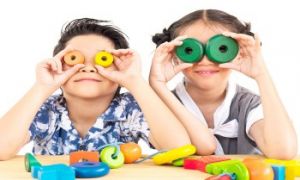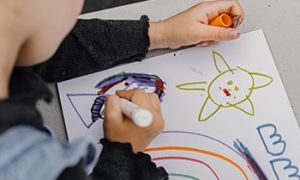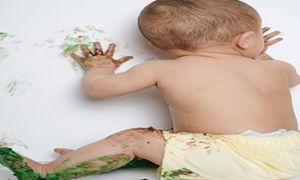To make the Early Years Learning Framework (EYLF) planning cycle more impactful and engaging, you can explore strategies that emphasize collaboration, creativity, and responsiveness. The folowing article provides Strategies For An Impactful and Meaningful EYLF Planning Cycle, What Is Child Centered Focus, What is Continuous Documentation, What Is Dynamic Programming, How To Include Follow Ups Into The EYLF Program, How Often Children Should Be Observed and more.
Strategies For An Impactful and Meaningful EYLF Planning Cycle
-
Child-Centered Focus:
- Base plans on children's interests and emerging skills. This will help create more personalized and meaningful learning experiences.
- Involve children in the planning process through discussions, drawings, or brainstorming sessions.
- Base plans on children's interests and emerging skills. This will help create more personalized and meaningful learning experiences.
-
Continuous Documentation:
- Instead of monthly follow-ups, incorporate ongoing observations and reflections into daily practice. Use tools like journaling, photographs, and videos to track progress and milestones regularly.
-
Dynamic Programming:
- Create flexible plans that allow for spontaneous learning opportunities and adapt to the children's evolving needs.
- Incorporate different teaching methods, such as project-based learning or play-based activities.
-
Team Collaboration:
- Regularly discuss plans with fellow educators to gather insights and foster shared accountability.
- Host weekly check-ins to review progress and share feedback.
-
Family Engagement:
- Invite families to contribute their observations and goals for their children. Their input can add deeper meaning to the planning cycle.
- Share updates with families in creative formats, like newsletters or digital portfolios.
-
Reflective Practices:
- Dedicate time for educators to reflect on what worked well and what needs improvement. Encourage peer feedback to refine the process.
-
Celebration of Achievements:
- Mark progress by celebrating children's accomplishments—big or small—to create a positive and motivating atmosphere.
-
Cultural Integration
- Include culturally relevant activities and materials. Work with families to bring in traditions, stories, and practices that can become part of the learning process.
-
Interest Webs
- Use an "interest web" to visually map children's current interests and brainstorm connected activities. This can make planning collaborative and creative.
-
Learning Journeys
- Document each child’s "learning journey" by capturing milestones and reflections over time. Use this to guide the planning process and highlight progress.
11. Nature-Based Learning:
- Incorporate outdoor activities into the program to encourage children to explore, connect, and learn through nature. These experiences can lead to unplanned but meaningful follow-ups.
12. Provocations
- Set up provocations (e.g., intriguing objects, setups, or questions) that invite children to explore and respond in their unique ways. Build learning experiences based on their reactions and discoveries.
13. Involve Older Children:
- Collaborate with older children (if in a mixed-age setting) to mentor or lead activities. Their input can add depth to the planning and inspire new ideas.
14. Document Creative Responses:
- Track children’s creative responses to activities (e.g., artwork, stories, or constructions) and use them as starting points for further exploration.
15. Future-Focused Learning:
- Design activities around big ideas or future skills (e.g., sustainability, kindness, problem-solving) while linking them to EYLF outcomes.
16. Digital Innovations:
- Use technology like tablets or simple video tools to co-create content with children—like short films, digital artwork, or narrated slideshows.
17. Community Connections:
- Plan outings or invite community members (e.g., local artists, gardeners, or firefighters) to bring real-world learning experiences into your program.
18. Child-Led Conferences:
- Have children present their learning to peers or families, showcasing what they’ve explored and what they wish to learn next.
19. Playful Assessment:
- Use play as a tool for assessing progress. Document moments when children naturally demonstrate skills or understandings relevant to EYLF outcomes.
Making the EYLF planning cycle a vibrant, collaborative process can enhance its value for children, families, and educators alike.
What Is Child Centered Focus
Expanding on the concept of a child-centered focus in EYLF planning can create a highly meaningful and engaging experience for children. Here are deeper insights and practical applications to implement this approach:
1. Observation-Led Planning
-
Go Beyond Interests: Observe not just what children enjoy, but also their behaviors, challenges, and evolving needs. For instance, a child repeatedly experimenting with pouring water might be exploring concepts like measurement or cause and effect.
-
Holistic Observations: Look for physical, social, emotional, and cognitive cues in children’s interactions and play. Use these observations to shape learning experiences.
2. Personalized Learning Goals
-
Tailor learning experiences to individual children’s developmental stages, preferences, and cultural backgrounds.
-
Set realistic, child-specific goals that align with EYLF outcomes while focusing on their personal growth.
3. Empowering Children's Voices
-
Ask for Input: Include children in planning by asking questions like, "What would you like to learn about next?" or "How can we make this activity even more fun?"
-
Choice-Driven Activities: Offer options and let children choose the direction of their learning (e.g., deciding the theme of a group art project).
4. Open-Ended Resources
-
Use materials that encourage creativity and exploration, like loose parts, natural objects, or art supplies.
-
Allow children to define the purpose and use of materials themselves—for instance, a pile of sticks might become a house, a fort, or something entirely new.
5. Project-Based Learning
- Develop extended projects based on children's interests. If a child shows curiosity about insects, plan activities like building bug habitats, reading related books, or conducting outdoor investigations.
6. Documentation and Reflection
- Use child-centered documentation methods like learning stories or photo journals that celebrate children’s achievements and encourage them to reflect on their experiences.
7. Linking to EYLF Outcomes
- Align every activity with EYLF outcomes by focusing on how it supports identity (Outcome 1), community (Outcome 2), wellbeing (Outcome 3), learning (Outcome 4), or communication (Outcome 5).
A child-centered focus helps children take ownership of their learning and fosters a deeper connection to their environment, peers, and educators.
What is Continuous Documentation
Continuous documentation in EYLF is all about maintaining regular and dynamic records of children's learning and development to ensure the planning cycle remains meaningful and responsive. Here’s how you can implement and enhance continuous documentation effectively:
Key Principles of Continuous Documentation
-
Ongoing Observations:
-
Make observation a daily or weekly practice to capture children's interests, behaviors, and milestones. This ensures no important moments are missed.
-
-
Dynamic and Flexible:
- Adapt documentation methods to suit different children and contexts. Use a combination of written notes, photos, videos, or artwork.
-
Child-Centered Focus:
- Highlight the child's voice by including their explanations, questions, and ideas within the documentation.
-
Reflective Practices:
- Reflect on the documented observations regularly to plan follow-ups and align with EYLF outcomes.
-
Collaborative Inputs:
- Engage families, educators, and even children in contributing to and reviewing documentation.
Methods for Continuous Documentation
-
Learning Stories:
-
Write anecdotal learning stories that narrate meaningful moments in children's experiences. Include direct quotes from the child to make it personal.
-
-
Photo Documentation:
- Use photos to capture activities, progress, or creations. Accompany the images with captions describing the child's thoughts or actions.
-
Video Journals:
- Record short videos of children engaging in play or learning. These can be shared with families or reviewed for planning.
-
Digital Tools:
- Platforms like Storypark, Educa, or Seesaw enable real-time documentation, photo-sharing, and collaboration with families.
-
Portfolios:
- Create individual portfolios for each child containing their work, achievements, and reflections. Update these regularly.
-
Daily Notes:
- Keep a notebook or digital file for quick entries about daily observations or highlights.
-
Reflection Wall:
- Set up a physical or digital "reflection wall" where educators jot down daily reflections for collaborative planning.
-
Progress Trackers:
- Use simple charts to map children's progress in specific areas over time. Update these during observations and evaluations.
Benefits
-
Improved Responsiveness: Frequent documentation ensures educators can adapt plans quickly to meet children’s evolving needs and interests.
-
Stronger Connections: Families feel more engaged when they see consistent updates about their child’s learning journey.
-
Deeper Understanding: Continuous records help educators identify patterns in development and learning.
What Is Dynamic Programming
Dynamic programming in the context of EYLF is about creating flexible, adaptive, and child-driven learning experiences that evolve with the children’s interests, needs, and developmental stages. Here's a deeper dive into its features and implementation:
Key Features of Dynamic Programming
-
Flexibility:
-
Plans are open to adjustments based on daily observations, spontaneous learning opportunities, or feedback from children and families.
-
It allows for deviation from rigid schedules to embrace "teachable moments."
-
-
Child-Led Learning:
- Activities and experiences are driven by the interests and ideas expressed by children.
- Encourages children to take ownership of their learning journey, fostering autonomy and engagement.
-
Interactive and Iterative:
- Ongoing reflection and assessment are integral, ensuring the program continuously adapts and improves.
- Learning is seen as a loop rather than a linear process, with opportunities to revisit and expand on previous experiences.
Practical Strategies for Dynamic Programming
-
Plan in Broad Strokes:
-
Create a loose structure with general themes or objectives but leave room to add specific activities based on children’s emerging interests.
-
-
Incorporate Feedback Loops:
- Use daily observations, group reflections, and family input to inform and refine the program.
- Regularly evaluate what’s working and what could be improved.
-
Facilitate Spontaneous Learning:
- Have open-ended resources and activities readily available. For example, if children are curious about the weather, you could quickly set up a rain gauge activity.
-
Embed Flexibility in Routines:
- Include time in the day for unstructured exploration or child-led activities, allowing children to guide the direction.
-
Use Projects and Provocations:
- Start with a question, story, or object that sparks curiosity, then co-create a learning journey with the children. For instance, observing a child’s interest in cars might lead to a project exploring transportation.
-
Diversify the Approach:
- Rotate between group activities, individual play, outdoor experiences, and quiet reflective times to cater to different learning styles and energies.
-
Collaboration with Families:
- Involve families by asking them to share observations, cultural practices, or ideas that can enrich the program.
-
Utilize Technology:
- Document ideas, activities, and reflections digitally to make updates to the program seamless. Tools like Seesaw or Trello can help manage and track changes effectively.
Benefits
-
Engagement: Children feel more connected to learning experiences that resonate with their interests.
-
Creativity: Educators and children alike are encouraged to think innovatively and explore new ideas.
-
Growth: The program evolves alongside the children, promoting continuous and holistic development.
How To Include Follow Ups Into The EYLF Program
Incorporating follow-ups into the EYLF program is a great way to ensure continuity in learning and planning while aligning with the framework's outcomes. Here are some strategies you can try:
-
Use Reflection as a Guide:
- After each activity or observation, reflect on what went well and identify areas for further exploration. Build follow-ups directly into your program based on these reflections.
-
Link to Children's Interests:
- Review past observations and learning stories to identify recurring themes or interests. Use these as the foundation for follow-up activities that expand and deepen their experiences.
-
Continuous Documentation:
- Maintain ongoing notes or records of each child's progress and achievements. Include next steps or suggestions for follow-ups to incorporate into future planning.
-
Follow-Up Planning in Learning Areas:
- Design follow-ups specific to developmental areas, such as language, social-emotional skills, or physical abilities. This helps ensure a balanced and holistic program.
-
Group Follow-Ups:
- Use group reflections or discussions to inspire collective follow-up activities. For example, if children show interest in space after a storybook, you could plan group projects like building a rocket model.
-
Family Contributions:
- Invite families to suggest follow-ups based on what they've observed at home or their cultural practices. Integrate these into the program to make it even more meaningful.
-
Embed Follow-Ups in Daily Routines:
- Rather than separate follow-ups as standalone activities, weave them into daily routines. For instance, a follow-up on gardening can include conversations about plant growth during snack time.
-
Visual Progress Tracking:
- Create progress charts or boards that show completed activities and planned follow-ups. This keeps everyone engaged and aware of next steps.
How Often Should Children Be Observed
The frequency of observations depends on factors like individual needs, developmental stages, program goals, and compliance with the EYLF. Here’s a guideline to help:
-
Continuous Observation:
- Children should be observed regularly throughout the day as part of natural interactions and play. This allows educators to capture spontaneous learning and development moments.
-
Scheduled Observations:
- In addition to informal daily observations, conduct more structured observations periodically. These are often done weekly, fortnightly, or monthly, depending on the childcare program's planning cycle.
-
Individual Needs:
- Some children may need more frequent observations based on their age, specific developmental needs, or interests. For example, toddlers developing communication skills might be observed more closely to track their progress.
-
EYLF Documentation:
- Observations are essential for aligning learning experiences with EYLF outcomes. Ensure each child is observed often enough to identify their strengths, needs, and interests for meaningful programming.
-
Family Input:
- Families may provide insights that prompt additional observations to address specific concerns or interests.
Ultimately, consistent observation—both planned and spontaneous—is key to supporting children’s learning and development while aligning with EYLF requirements.
How To Keep Track Of Observered Children
Keeping track of children observed in childcare is essential for ensuring every child’s developmental progress is monitored and supported effectively. Here are some strategies and tools to help streamline the process:
Observation Checklist
- Use a simple checklist with children’s names to tick off when they’ve been observed.
- Organize by week, month, or planning cycle so you can easily identify who still needs an observation.
- Include columns for areas of development (e.g., cognitive, social-emotional, physical) to ensure all aspects are covered..
Portfolios
- Maintain individual portfolios for each child with their observations, learning stories, and developmental milestones.
- Update portfolios regularly to ensure every child is being tracked consistently.
Daily or Weekly Notes
- Set aside time daily or weekly to record key observations. This could be in a shared notebook, an online document, or even sticky notes that are later compiled into records.
Rotational Observation Schedule
- Create a schedule to ensure every child is observed over a certain period (e.g., weekly or fortnightly). Rotate focus across different children each day.
Group Tracking System
- Use a visual system, like a wall chart or bulletin board (confidentially managed), to track which children have been observed. For example:
- Create individual pockets for each child to hold observation notes.
- Move markers or pegs to show who has been observed.
Reflective Planning Meetings
- Dedicate part of team meetings to reviewing which children have been observed and identify gaps together.
- Collaboratively plan follow-ups or activities for children who haven’t been observed recently.
By implementing these strategies, you can ensure that all children are observed regularly and that their individual needs are supported.
Further Reading
EYLF Learning Outcomes Version 2.0
Free EYLF Version 2.0 Posters and Cheat Sheets
5 Stages Of The EYLF Planning Cycle
The Planning Cycle To Document Children's Learning
Practical Examples Of The Planning Cycle In Action
The Cycle of Planning
Guide To Writing The EYLF Curriculum Plan







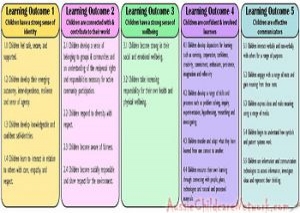 Here is the list of the EYLF Learning Outcomes that you can use as a guide or reference for your documentation and planning. The EYLF
Here is the list of the EYLF Learning Outcomes that you can use as a guide or reference for your documentation and planning. The EYLF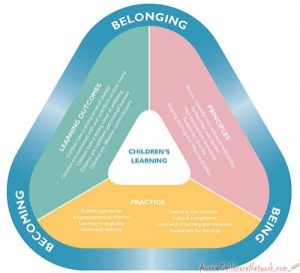 The EYLF is a guide which consists of Principles, Practices and 5 main Learning Outcomes along with each of their sub outcomes, based on identity,
The EYLF is a guide which consists of Principles, Practices and 5 main Learning Outcomes along with each of their sub outcomes, based on identity, This is a guide on How to Write a Learning Story. It provides information on What Is A Learning Story, Writing A Learning Story, Sample
This is a guide on How to Write a Learning Story. It provides information on What Is A Learning Story, Writing A Learning Story, Sample One of the most important types of documentation methods that educators needs to be familiar with are “observations”. Observations are crucial for all early childhood
One of the most important types of documentation methods that educators needs to be familiar with are “observations”. Observations are crucial for all early childhood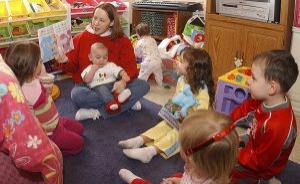 To support children achieve learning outcomes from the EYLF Framework, the following list gives educators examples of how to promote children's learning in each individual
To support children achieve learning outcomes from the EYLF Framework, the following list gives educators examples of how to promote children's learning in each individual Reflective practice is learning from everyday situations and issues and concerns that arise which form part of our daily routine while working in an early
Reflective practice is learning from everyday situations and issues and concerns that arise which form part of our daily routine while working in an early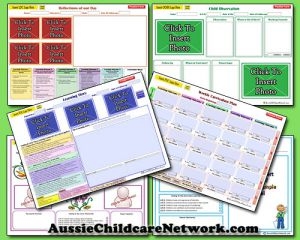 Within Australia, Programming and Planning is reflected and supported by the Early Years Learning Framework. Educators within early childhood settings, use the EYLF to guide
Within Australia, Programming and Planning is reflected and supported by the Early Years Learning Framework. Educators within early childhood settings, use the EYLF to guide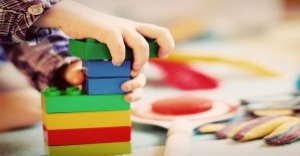 When observing children, it's important that we use a range of different observation methods from running records, learning stories to photographs and work samples. Using
When observing children, it's important that we use a range of different observation methods from running records, learning stories to photographs and work samples. Using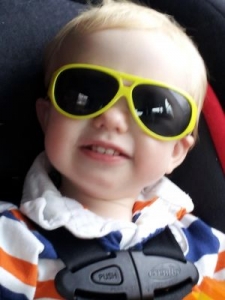 This is a guide for educators on what to observe under each sub learning outcome from the EYLF Framework, when a child is engaged in
This is a guide for educators on what to observe under each sub learning outcome from the EYLF Framework, when a child is engaged in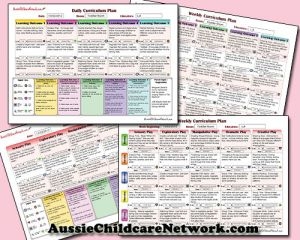 The Early Years Learning Framework describes the curriculum as “all the interactions, experiences, activities, routines and events, planned and unplanned, that occur in an environment
The Early Years Learning Framework describes the curriculum as “all the interactions, experiences, activities, routines and events, planned and unplanned, that occur in an environment